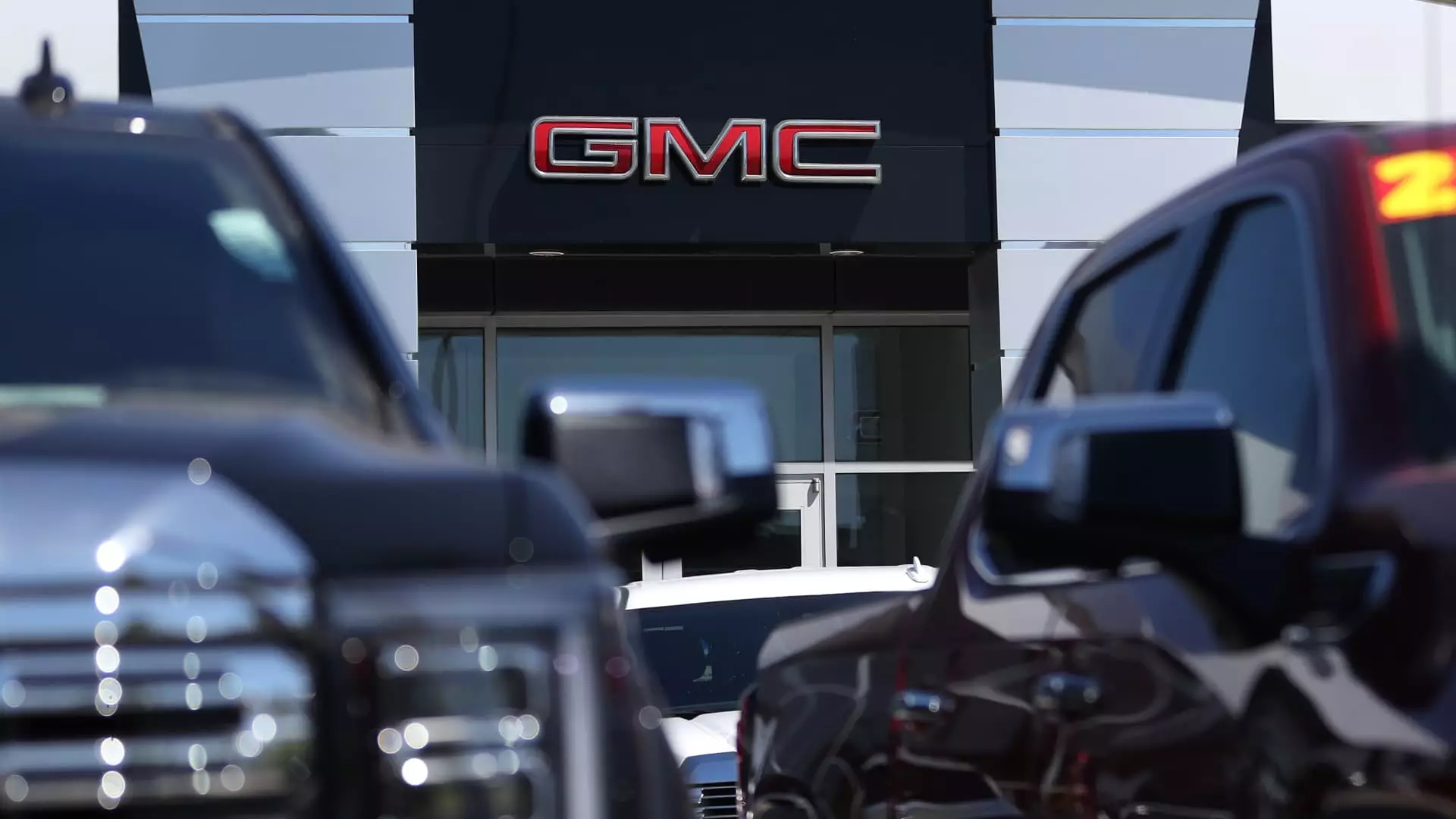General Motors (GM) has recently articulated its earnings outlook during an investor day event, revealing plans to maintain adjusted earnings that mirror those of the current fiscal year. CFO Paul Jacobson announced that the company’s targeted adjusted earnings before interest and taxes (EBIT) for 2024 would be positioned between $13 billion and $15 billion, translating to approximately $9.50 to $10.50 per share. This projection marks a slight increase from prior expectations of $12.5 billion to $14.5 billion. However, considering that these targets come amid a backdrop of declining auto industry sales and faltering consumer spending, GM’s ambition for 2025 appears challenging and ambitious.
The automotive sector is currently grappling with economic pressures that are expected to exacerbate in the coming year. Jacobson noted that Wall Street forecasts suggest a more arduous landscape for automakers in 2025, indicating that sustaining or surpassing current earnings amidst these conditions will be a monumental achievement for GM. Yet, while GM refrains from providing explicit figures for its 2025 financial guidance—set to be unveiled early next year—the company hints that a substantial part of its earnings growth will stem from improvements in its electric vehicle (EV) segment.
A significant highlight of GM’s strategy is the anticipated contribution from electric vehicles, with expectations of generating an additional $2 billion to $4 billion in earnings. Jacobson emphasized that GM plans to have eight new EV models on the market, each forecasted to deliver about nine additional percentage points in EBIT margin compared to previously comparable models. This aspect of GM’s strategy is crucial as it embodies the company’s broader pivot towards electrification, which aims to capture a vital share of the growing EV market.
In response to evolving costs and market conditions, GM has made notable strides to enhance its profitability in the EV sector. Jacobson revealed that the company has effectively reduced EV variable profits by over 30 points year-over-year through Q3. This underscores GM’s commitment to optimizing its operations and achieving greater efficiencies in production and supply chain management. Notably, GM predicts that as it continues to improve efficiencies in engineering, manufacturing, and sales processes, it can sustain that upward trajectory in profit margins.
In terms of capital expenditures, GM anticipates consistency in its spending patterns into 2025. The 2024 financial guidance suggests a capital allocation of $10.5 billion to $11.5 billion—a reflection of the corporation’s strategic approach to balancing innovation investment while managing operational costs. The anticipated reduction in fixed costs, which has seen a decline of $2 billion over the past two years after accounting for depreciation and amortization, further supports GM’s earnings outlook.
The Detroit automaker is also looking to capitalize on relatively steady market demand alongside controlled incentive spending, which provides a buffer against external market volatility. However, the success of these strategies depends significantly on external economic factors, including consumer behavior, regulatory changes, and technological advancements within the industry.
Despite these projections and strategic announcements, GM’s stock has faced mounting pressure in recent weeks, closing at $46.01—essentially unchanged following the investor day. The stock remains up approximately 28% for the year, but this optimistic outlook is clouded by recent downgrades and adjustments in price targets by Wall Street analysts, which signal a cautious sentiment about GM’s prospects in an evolving automotive landscape.
While General Motors underscores its ambitious targets for earnings stability and growth, particularly in the electric vehicle sector, the company will need to adeptly navigate a multitude of challenges as 2025 approaches. With market uncertainties and evolving consumer demands, GM’s strategies will be crucial to its overarching goal of maintaining financial health in a rapidly changing industry.

